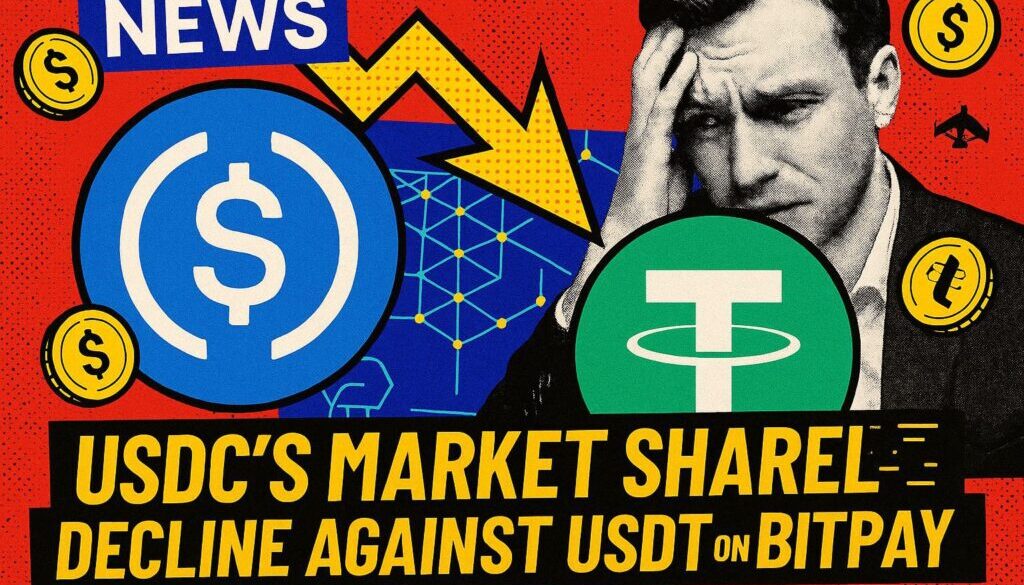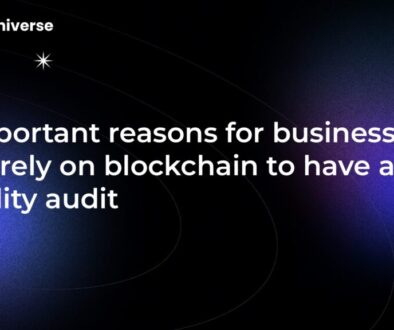USDC’s Market Share Decline Against USDT on BitPay

The Shifting Sands of Stablecoin Dominance
Stablecoins are the bedrock of the crypto economy, providing a crucial bridge between volatile digital assets and traditional fiat currencies. For years, USDC, issued by Circle, has been a strong contender, often lauded for its regulatory compliance and transparency. However, recent data from 2025 reveals a surprising shift in the stablecoin landscape, particularly on the prominent payment processor, BitPay. Despite its optimistic public launch and perceived regulatory advantages, USDC has seen a notable decline in market share against its long-standing rival, Tether’s USDT.
The BitPay Battleground: USDC vs. USDT Transaction Dynamics
The competition between stablecoins is fierce, and BitPay transactions offer a clear snapshot of evolving user preferences. In January 2024, USDC commanded an impressive 85% of stablecoin transaction counts on BitPay, with USDT trailing significantly at a mere 13%. This dominance positioned USDC as the go-to stablecoin for many users and businesses utilizing BitPay for their crypto payments.
However, the narrative dramatically altered by May 2025. USDC’s share plummeted to 56%, while Tether’s USDT surged to capture 43% of transaction counts. This indicates a substantial reduction in USDC’s previous dominance and a significant gain for USDT.
The shift isn’t merely about the number of transactions; it’s also reflected in the volume of payments. By March 2025, USDT had already taken the lead in payment volume, capturing over 70% of stablecoin transactions on BitPay. A BitPay chief revenue officer confirmed this reversal, noting that while USDC had nearly double the transaction count of USDT in 2024, this trend has since declined.
Despite this transactional shift on BitPay, both stablecoins have demonstrated robust growth in their overall market capitalization. Over the past year, USDC’s market cap soared by 88%, reaching $61.7 billion. USDT, while experiencing a comparatively smaller growth rate of 40%, maintained its lead as the largest stablecoin by market value, reaching an impressive $158.3 billion.
The Regulatory Arena: How Laws Shape Stablecoin Fortunes
Regulatory developments play a pivotal role in shaping the stablecoin market, influencing everything from adoption to market share. The year 2025 has seen significant movements on this front, particularly with the European Union’s Markets in Crypto-Assets Regulation (MiCA) and the proposed GENIUS Stablecoin Act in the U.S.
MiCA in the EU: A New Era for Stablecoins
In the European Union, MiCA has been a game-changer for stablecoins. Designed to enhance transparency, consumer protection, and market integrity, MiCA requires stablecoin issuers to obtain licenses and adhere to stringent compliance standards. This robust framework aims to provide greater clarity and stability for digital asset markets within the EU. As a result, some issuers have had to adjust their reserve structures, and others might consider exiting the EU market due to the strict requirements.
The GENIUS Act in the U.S.: Towards a Clear Framework
Across the Atlantic, the United States is also making strides with the proposed GENIUS Stablecoin Act. This legislation aims to create a clear regulatory framework for stablecoin issuance and utilization, focusing on consumer protection and financial stability. Key requirements of the GENIUS Act include:
- 100% Reserve Backing: Stablecoins must be fully backed by U.S. dollars.
- Short-Term Treasuries: Reserves are mandated to be held in short-term U.S. Treasuries.
- Clear Issuance Framework: Establishing defined rules for how stablecoins can be issued and used.
This Act could significantly benefit stablecoins like USDC, which are often praised for their transparent and compliant reserve structures, potentially bolstering their position in regulated U.S. markets. Circle, the issuer of USDC, has generally embraced a more proactive, compliance-first strategy, positioning USDC as a ‘regulated’ stablecoin, especially appealing in jurisdictions adopting frameworks like MiCA.
Tether, on the other hand, has historically adopted a more decentralized and less traditionally regulated stance. While this approach has allowed USDT broader reach in various global markets, it has also sometimes drawn increased scrutiny. The contrasting regulatory approaches of Circle and Tether further underscore the competitive dynamics at play, with each stablecoin navigating the evolving global regulatory landscape in its own way.
Conclusion: A Dynamic Stablecoin Landscape
The shift in USDC and USDT’s market share on BitPay is a clear indicator of the dynamic and rapidly evolving stablecoin landscape. While regulatory clarity, as seen with MiCA and the GENIUS Act, might favor more compliant stablecoins like USDC in specific jurisdictions, global market liquidity, user preference, and the sheer volume of transactions continue to propel USDT’s growth.
The stablecoin race is far from over, and 2025 has certainly shown that even established leaders must adapt to stay ahead in this competitive and increasingly regulated environment. As the crypto ecosystem matures, the interplay between market dynamics, technological innovation, and regulatory frameworks will continue to shape the future of stablecoins.


